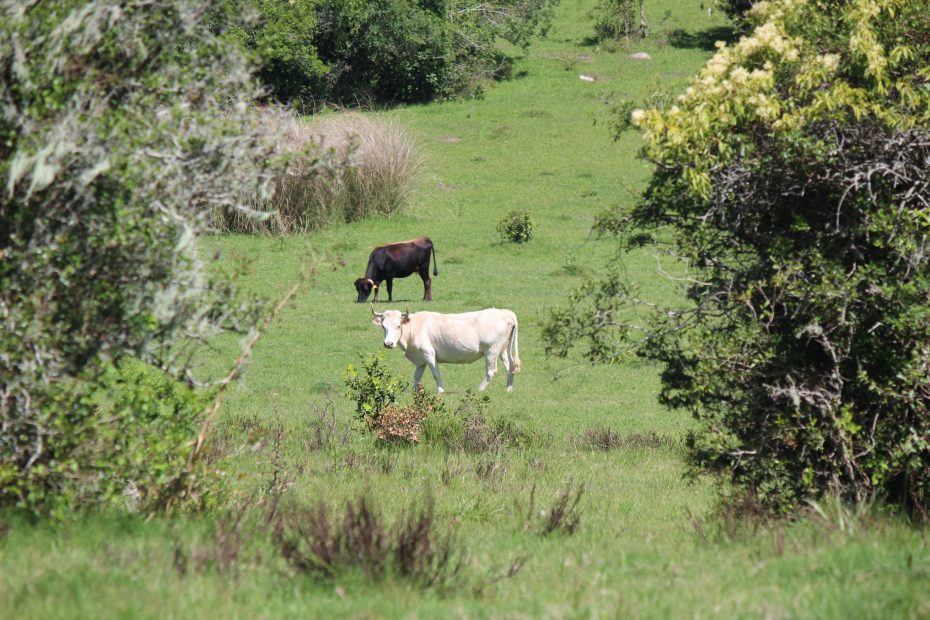Uruguay is a charming South American country known for its laidback vibe, beautiful beaches, and fascinating colonial towns. If you’re planning a trip to Uruguay, be sure to explore some of its captivating historic settlements filled with quaint cobblestone streets, colorful colonial architecture, interesting museums, and delicious food. Here are some of the best colonial towns to visit in Uruguay.
Table of Contents
Colonia del Sacramento
Founded in 1680 by the Portuguese, Colonia del Sacramento is arguably Uruguay’s most beautiful and historic town. This picturesque city with its UNESCO-listed Barrio Histórico district transports you back in time with its quaint cobblestone streets, atmospheric ruins, and colorful colonial buildings.
Strolling through the Barrio Histórico is a joy. Here you’ll find the 1820 Portuguese Museum housed in a former governor’s mansion, the mid-18th-century town gate Portón de Campo, the ruins of 17th-century convents, as well as cute cafés and art galleries. From the iconic lighthouse on the Punta district, you can enjoy panoramic river views.
Accommodation options in Colonia range from luxury hotels to cozy B&Bs. Don’t miss the chance to sample some delicious food like fresh seafood and award-winning wines from the region.
Carmelo
Located on the east bank of the Río de la Plata, Carmelo oozes old-world charm. This laidback town was founded in 1816 and developed as an important port. Take a relaxing stroll along the Rambla costanera with its riverfront parks and beaches. From the hilltop Mirador Belvedere, you’ll be rewarded with spectacular views.
History buffs will enjoy visiting the museum quarter to see artifacts like dinosaur fossils, gaucho gear, and pre-Columbian pottery. Carmelo is also known for its wineries surrounded by rolling vineyards. Sample some fine Tannat, Merlot, and Chardonnay on a wine tour.
For accommodation, you’ll find everything from family-run B&Bs to luxury hotels with river views and swimming pools.
Salto
Founded in 1756, Salto is one of Uruguay’s oldest towns and the second-largest city in the country. It has a vibrant cultural scene thanks to its two universities. Architecture enthusiasts will love strolling past the ornate 19th-century buildings around Plaza Constitución in the center.
Top attractions include the neoclassical Salto Cathedral, the archaeological museum showcasing indigenous artifacts, and the scenic Parque del Lago hostel with a huge swimming pool. Just across the bridge is the town of Concordia in Argentina.
Salto has lots of hostels catering to backpackers as well as mid-range hotels. Be sure to try some chipas pastries – a local specialty of cornmeal dough with cheese.
Paysandú
Sitting on the east bank of the Río Uruguay, Paysandú is one of Uruguay’s most important river ports. It was founded in 1772 and has many historical landmarks like the striking bullet-riddled Casa de los tres gobernadores and 19th-century neoclassical cathedral.
Climb to the top of cerro chata hill for sweeping views over the town. Other highlights include the bustling handicrafts market, Independence Square, and interesting museums like the anthropological museum in a former prison.
Visitors can choose from a good range of hotels, apartments, and B&Bs when staying in Paysandú. Don’t miss the chance to try some delicious river fish like pacú and surubí.
Fray Bentos
Set along the east bank of Río Uruguay, Fray Bentos has an industrial past thanks to its large meat packing plant operational from 1859 to 1979. Foodies should visit the former plant, now converted into the fascinating Museum of the Industrial Revolution with exhibits showcasing its history.
Other top attractions are the ornate Iglesia Santísimo Rosario cathedral built in 1860, botanical gardens, and lively handicrafts market. You can also take boat trips on the river or go birdwatching along the shore.
Accommodation options include the heritage Hotel & Spa Entre Ríos set in an old mansion as well as more budget-friendly B&Bs. Be sure to try Fray Bentos’ famous meaty empanadas.
Minas
Nestled in western Uruguay’s rolling hills, cute Minas was founded in 1760. Take a relaxing stroll past its historical buildings like the grand railway station, neoclassical cathedral, Casa de Cultura center, and old town hall on Plaza Independencia.
Just outside town is one of Uruguay’s most important archaeological sites – the Cañada de los Difuntos with prehistoric cave paintings and petroglyphs. Other attractions include visiting gaucho ranches, the aviation museum, and sipping Tannat wines.
Accommodation options range from estancia farm stays to comfortable mid-range hotels. Be sure to sample Minas’ delicious cheeses and dulce de leche treats.
Conclusion
From atmospheric colonial quarters and interesting museums to buzzing handicrafts markets and stunning natural scenery, Uruguay’s charming historic towns have so much to offer travelers. Immerse yourself in the laidback culture and explore the cobblestone streets to experience the country’s rich history and architecture. These colonial gems make a rewarding addition to any Uruguay itinerary.
FAQs
What is the most popular colonial town in Uruguay?
The UNESCO World Heritage Site of Colonia del Sacramento is the most popular and visited colonial town in Uruguay. It attracts visitors with its well-preserved 17th-18th century Portuguese colonial architecture.
What is the best way to get around colonial towns in Uruguay?
The best way to explore Uruguay’s colonial towns is on foot so you can wander the cobblestone streets at leisure. Bicycles and ferries are also handy for getting between river towns. Local buses connect the towns.
Where can you sample wines in Uruguay’s colonial towns?
The towns of Carmelo and Minas in western Uruguay have vineyards dotted around them and many wineries that offer tastings and tours. Colonia del Sacramento also has several wineries near town.
What is a typical local dish found in Uruguay’s colonial towns?
Typical dishes to try in Uruguay’s colonial towns include fresh river fish, tender grilled beef, empanadas, cheeses, and dulce de leche desserts. Coastal towns also serve delicious seafood.
What is the best time of year to visit colonial towns in Uruguay?
The summer months from December to February are peak season with warm weather perfect for strolling around town. Spring (September-November) and fall (March-May) have mild temperatures that are ideal times to visit.
